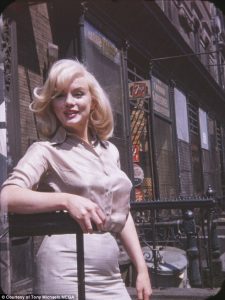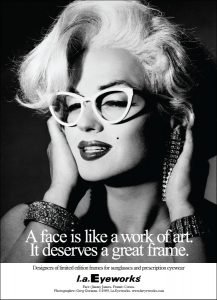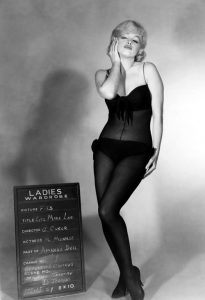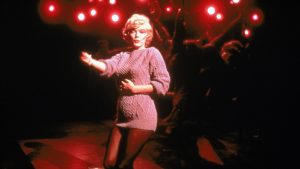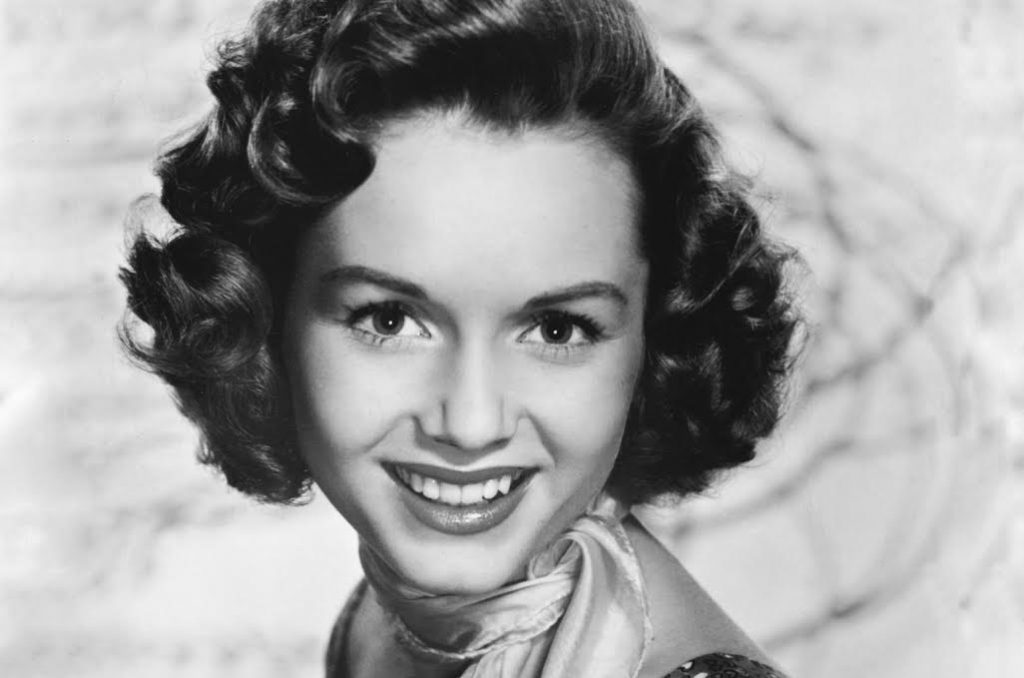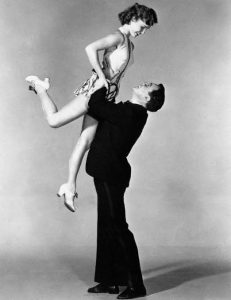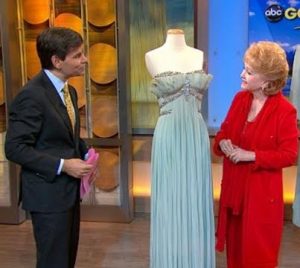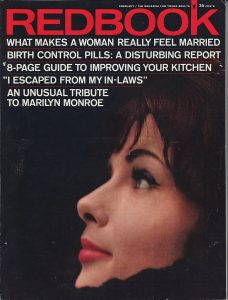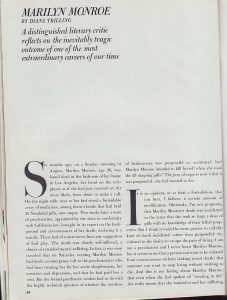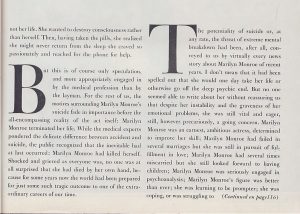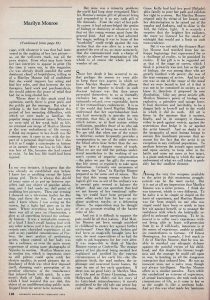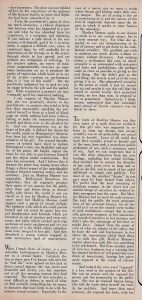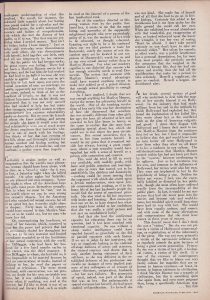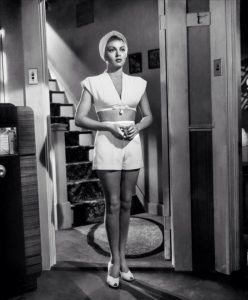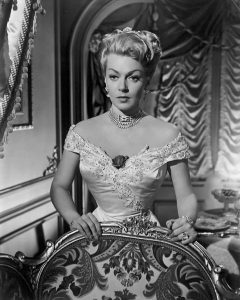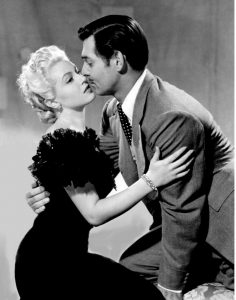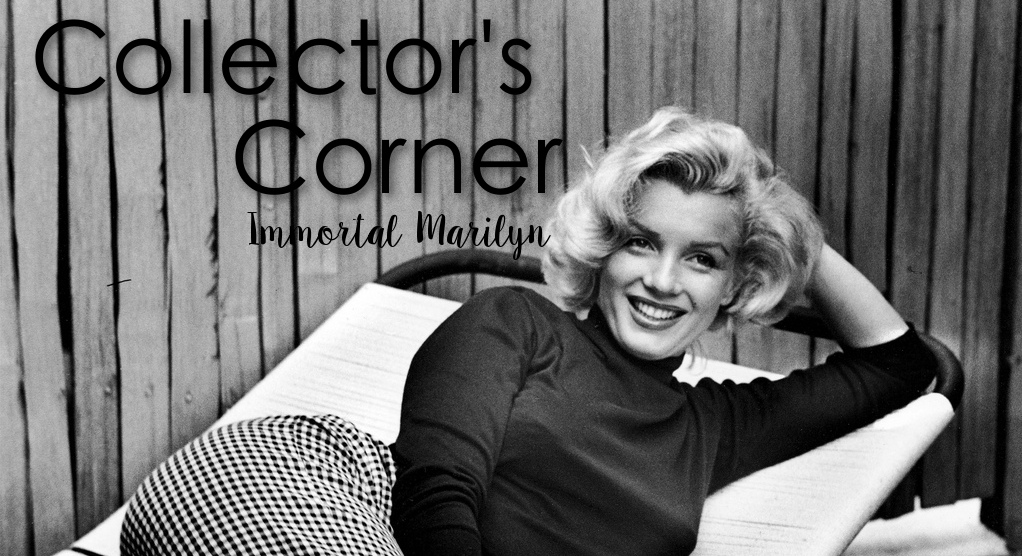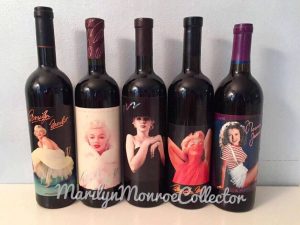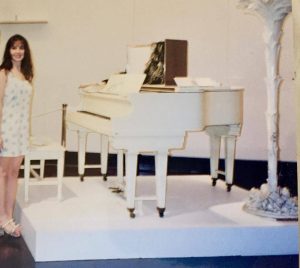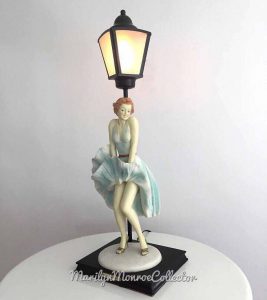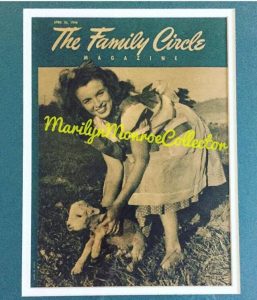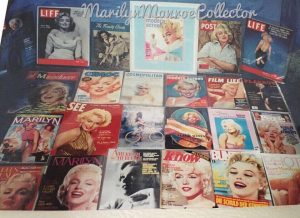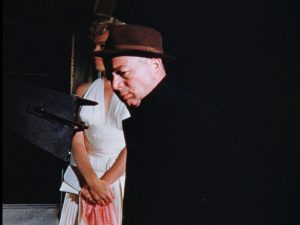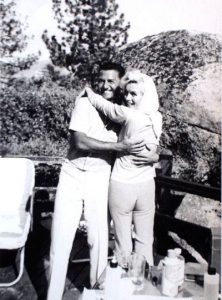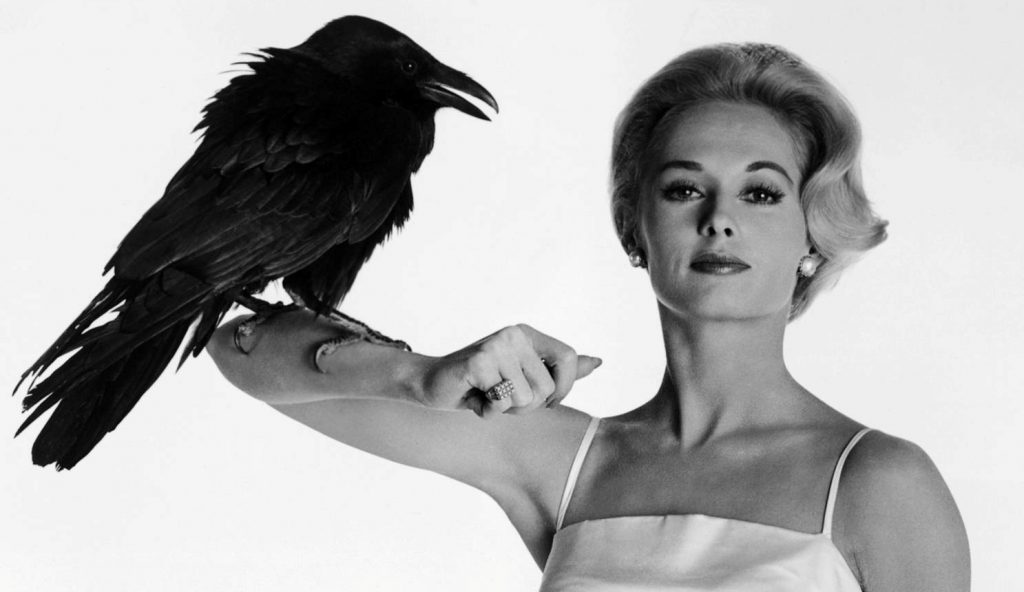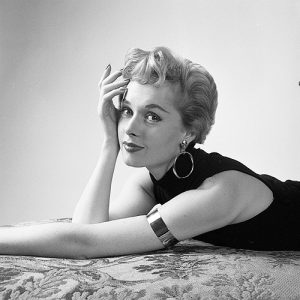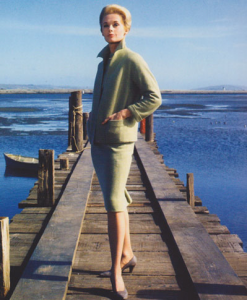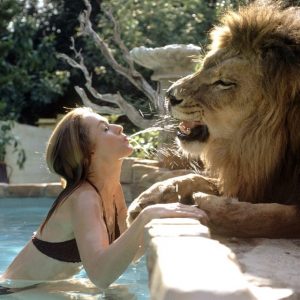The white pleated halter dress that Marilyn Monroe wore in The Seven Year Itch is always described in superlatives: most iconic, most recognized, most recreated, most expensive. It can also be called the most mysterious: how many copies of the dress were there? Is there another one in existence, hidden away all these years? Did Marilyn herself own a copy of the dress, and if so, where did it end up? And perhaps most intriguing: was a copy of the dress really stolen back in 1993?
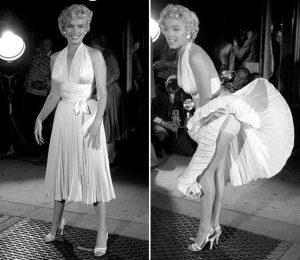
On location in New York
In 2011, The Seven Year Itch dress was sold to great fanfare for an astounding $5.6 million. It had been part of the Debbie Reynolds collection, obtained by her during studio sell offs of costumes in previous decades. Astute Marilyn fans noticed that there were some discrepancies between the dress being auctioned and the one Marilyn appeared to be wearing. For cost saving measures, studios would reuse costumes, making alterations as needed, and this was no exception: the dress was altered and worn by Roxanne Arlen in the film Bachelor Flat in 1962, and this was the dress in Reynold’s collection. Scott Fortner investigated extensively and was able to prove beyond doubt that the dress auctioned was in fact one that was worn by Marilyn and was also confirmed by the designer, William Travilla, himself.So it would appear that the dress auctioned is authentic, alterations and all. You can read Scott’s detailed research here.
However, Scott’s research raised some more questions, especially after it was revealed in Travilla’s notes that he had actually made four copies of the famous dress. It would make sense that one was used on location in New York, and another for the reshoots of the scene in Los Angeles. So where are the other dresses, if they exist?
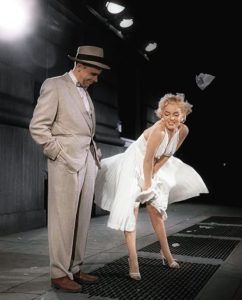
Filming on an LA soundstage.
When Marilyn Monroe died, her Last Will and Testament stated “I give and bequeath all of my personal effects and clothing to LEE STRASBERG, or if he should predecease me, then to my Executor hereinafter named, it being my desire that he distribute these, in his sole discretion, among my friends, colleagues and those to whom I am devoted.” Rather than distributing these items to her friends, Lee had everything from her Los Angeles home and her New York apartment placed in storage. Two years after the death of his wife Paula in 1966, Lee married Anna Mizrahi, a woman 38 years his junior. They met when Anna, an aspiring actress, auditioned for a place at The Actor’s Studio. When Lee died in 1982 his entire estate, which included Marilyn’s belongings, was inherited by Anna. Anna Strasberg has been a controversial figure, as she held sole rights to Marilyn’s belongings, name, image, and licensing and ruled them with a litigious iron fist although she had never even met her. Lawsuits were filed against anyone who attempted to use Marilyn for commercial gain, including a drawn out battle with Marilyn’s photographers over who retained the rights to their photos: the photographers who took them or Anna, as they contained Marilyn’s image. (the photographers won). In 1999, following Joe Dimaggio’s death, Anna cosigned the majority of Marilyn’s belongings that had been warehoused to Christie’s Auctions for the now legendary $13 million sale. However, a few years prior to that we gained some clues as to the whereabouts of a second Seven Year Itch dress.
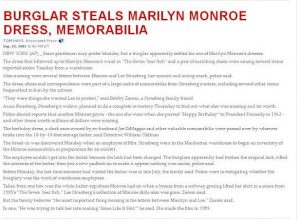
Initial news report of the burglary.
On September 13, 1993 a stolen property report came in to the 10th Precinct of the New York Police Department. A storage unit had been burglarized, and some cartons had been stolen. A pretty nondescript crime, except those cartons contained the personal property of Marilyn Monroe. The report was filed by none other than Anna Strasberg. She kept several boxes of Marilyn’s things in a seventh floor storage locker at Chelsea Mini-Storage on West 28th Street. An employee had gone to do an inventory report for an upcoming exhibit and discovered that there was a new lock on the door and cartons were missing. Evidently a burglar had cut the lock, stolen 3 or 4 (reports vary) boxes of priceless Marilyn memorabilia, and then took the time to put a new lock on the unit. The last time the items had been checked on was late July, so the crime could have occurred at any time in the previous six weeks.
Initial news reports on September 15 claimed that items listed as missing were letters between Marilyn and Lee Strasberg, the sequinned Jean Louis dress that she wore when she sang Happy Birthday to President Kennedy, and the dress and shoes from The Seven Year Itch. However, the following day Detective William Oldham of the Major Case Squad stated to the press that reports that the Happy Birthday dress was missing were false.
Thomas O’Malley, a detective with over 20 years on the police force, was assigned the case of the missing Monroe items. He spent six and a half months tracking down clues and investigating who had stolen the Marilyn items and where they were now, and the pressure was on for him to find the most valuable missing items: Marilyn’s white pleated dress and shoes from The Seven Year Itch. As he pursued leads, the local and national newspapers all reported on the theft of the most recognizable film costume of all time. O’Malley searched out witnesses, fingerprinted the scene, checked the storage facility’s customer list, and interrogated prisoners. Eventually he got a lead that seemed worthwhile: a prisoner told him that it had been a crime of opportunity, and the thief was someone named Jesus Davila. After discovering that Davila had a previous arrest for burglary of a storage unit and had a rented unit on the same floor of the storage facility as Anna, O’Malley felt he had his man.
 On March 28, 1994, armed with a search warrant, O’Malley entered Davila’s storage unit and immediately spotted boxes with Anna’s name and address on them contained within. O’Malley called Anna in California with the good news and asked her to send a representative over to identify the stolen property. Eagerly awaiting a look inside the boxes, O’Malley wholeheartedly hoped that the Seven Year Itch dress had been recovered. “Not just for Anna’s sake, not just to do my job as a detective, but for Marilyn Monroe herself,” he said. “The dress is a piece of movie history, and a symbol of its sexiest star.”
On March 28, 1994, armed with a search warrant, O’Malley entered Davila’s storage unit and immediately spotted boxes with Anna’s name and address on them contained within. O’Malley called Anna in California with the good news and asked her to send a representative over to identify the stolen property. Eagerly awaiting a look inside the boxes, O’Malley wholeheartedly hoped that the Seven Year Itch dress had been recovered. “Not just for Anna’s sake, not just to do my job as a detective, but for Marilyn Monroe herself,” he said. “The dress is a piece of movie history, and a symbol of its sexiest star.”
The representative arrived and the boxes were opened. The famous dress was not there.
The next day, March 29, O’Malley arrived at St. Luke’s -Roosevelt hospital, where Jesus Davila worked, to make the arrest. Davila quickly confessed to committing the crime and said that he had given some of Marilyn’s things to his coworkers and a neighbor in his building. They were told they had until 8 o’clock that evening to return everything or face charges of receiving stolen goods themselves.
Back at the precinct, Davila offered more details of the crime. He had clipped the lock on Anna’s storage unit and removed the boxes, but claimed he had no idea what was in them until the press reported that the theft was of Marilyn Monroe’s property. He then moved some of the items to his home, and gave some away as gifts. Davila consented to having the officers escort him to his apartment to do a search and recover the stolen goods, and that search was conducted at 4:40 pm on March 29. Nothing was found in Davila’s apartment, but the neighbor Davila had given items to brought down a black plastic bag and handed it over to the detectives. It contained a few hats, a fur piece, and some plates but no white pleated dress and Davila was not forthcoming about it’s whereabouts.
The press reported on the items recovered but noted that the Seven Year Itch dress was still missing. O’Malley was taken aback when his superiors told him to stop working to recover the dress. They were claiming the the new ”official” story was that the dress and shoes had been located in Anna’s storage unit after all. The detective was initially startled by this pronouncement, but after all his years as a detective thought he had figured out what had happened.
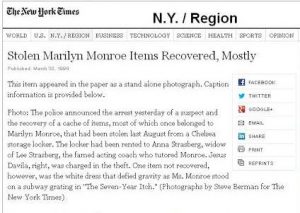 In an interview in 2000 about the case of the missing dress, O’Malley used the following analogy:
In an interview in 2000 about the case of the missing dress, O’Malley used the following analogy:
“If a stamp collection with one world famous stamp were stolen and most of it recovered except the premier stamp, the owner would of course do anything to get it back; and if the perp had a half decent lawyer, he would know that stamp was his bargaining chip. The lawyer could offer to return the stamp provided his client didn’t get any jail time. Probation, maybe, but no jail time.
{As far as the dress} Here’s a guy who got himself a get-out-of-jail-free card.
Lawyers make deals with the district attorney’s office, they don’t make deals with the police department. The DA has the last lick. So if a cop is looking for a world famous stamp and the DA tells him to stop poking around, what’s he to do but stop looking?
But how do you explain the stamp all of a sudden showing up? Of course, the media is going to ask the police if they recovered the stamp. The detective would respond “I never recovered the stamp”. So the media would say “Wait a minute, what’s going on here? If the police didn’t recover it, how was it found?’ To save face, the DA might say “The stamp was reported stolen in error. It was in the back of the safe, and we didn’t see it. But it was always there.The owner’s got his stamp back, the perp does soft time, the district attorney is happy because the case is closed with probation, and the police department is happy because the case is closed.”
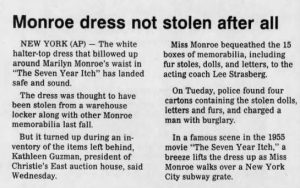 Detective O’Malley was interviewed for this article. He speaks in the no nonsense way that one would expect from a New Yorker with years on the police force, but his story remains absolutely consistent with both the published reports at the time and later interviews he gave about the missing dress. “We checked the guy’s apartment, there wasn’t much there. He didn’t keep the stuff. He put it in an upstairs apartment, we went there and found everything. The DA and I sat down and she said ‘Tommy, you got him good.” He couldn’t say he didn’t do it, everything led to him. We found it in the storage bin in his name and got a confession from him. I had it locked down,a done deal. The perp was charged with grand larceny and burglary also.”
Detective O’Malley was interviewed for this article. He speaks in the no nonsense way that one would expect from a New Yorker with years on the police force, but his story remains absolutely consistent with both the published reports at the time and later interviews he gave about the missing dress. “We checked the guy’s apartment, there wasn’t much there. He didn’t keep the stuff. He put it in an upstairs apartment, we went there and found everything. The DA and I sat down and she said ‘Tommy, you got him good.” He couldn’t say he didn’t do it, everything led to him. We found it in the storage bin in his name and got a confession from him. I had it locked down,a done deal. The perp was charged with grand larceny and burglary also.”
He goes on to reiterate how he was told lay off anything to do with the famous white dress, which was not recovered at Davila’s apartment building. “I get a call from DA, she says the dress will be recovered. It was the only thing that was still missing but I was told to stop working the case. I asked “How are you going to put that into play?” She says to go see Anna Strasberg and talk to her. So I go see her at her apartment. She tells me it was never missing, I always had it. I didn’t believe her, but she insisted, so that’s how it’s going to be. If it’s not missing, and she has it, that’s it, case closed. All she really wanted was the dress, that’s why it was big time publicized and in all the papers at the time. I could have made a big stink, but it was considered closed and I had other cases to get to.”
He repeats his earlier theory that the dress was used as a bargaining chip to get a plea deal: “I think the guy’s lawyer convinced him to return the dress to her, she says it’s her mistake, it was never actually stolen. The DA went along with it, the whole case is dismissed. They worked out a deal, I see it all the time. I don’t think he even did any time for it. That’s how you get out of doing time for stealing a million dollar dress.”
O’Malley’s theory seems plausible,which would mean that the second Seven Year Itch dress is safely with Anna Strasberg and we may never know if it was actually stolen or not. However, there’s one more bit of intrigue to the Seven Year saga…..sources have said that Anna Strasberg not only says that she does not currently have a Seven Year Itch dress, she claims that she NEVER had a Seven Year Itch dress. I asked Detective O’Malley why he thought it would be claimed that she never owned the dress and while he was reluctant to speculate, he did state that maybe it had simply been sold privately some time ago and that both Anna and the new owner didn’t want that publicized.
Anna cosigned what is believed to be the remainder of Marilyn’s personal items to Julien’s Auctions for a November 2016 sale and there is certainly no Seven Year Itch dress among the lots. Which begs the question….does Anna in fact have the dress and is withholding that information for reasons known only to her? Did she have it in 1994 but no longer has it today? Or, is she being truthful in stating that she has never had one….but then how does that explain the police report, filed by Anna Strasberg personally according to Detective O’Malley, stating that it was missing? Stoically reluctant to answer questions pertaining to Marilyn on the record, we may never know from Anna herself. While it’s highly likely that there is more than one copy of the dress, until it surfaces and brings it’s story with it, all we can do is speculate on who has it and where it is now.
By Marijane Gray for Immortal Marilyn


